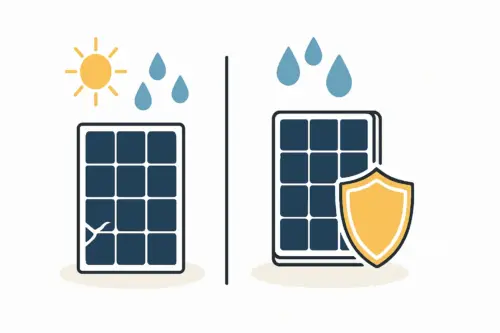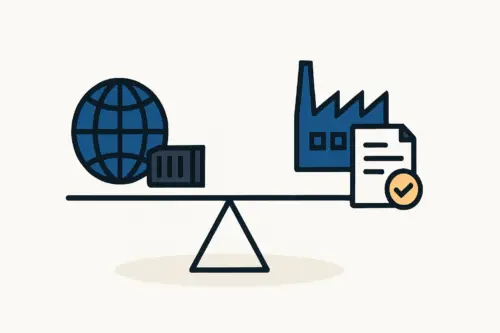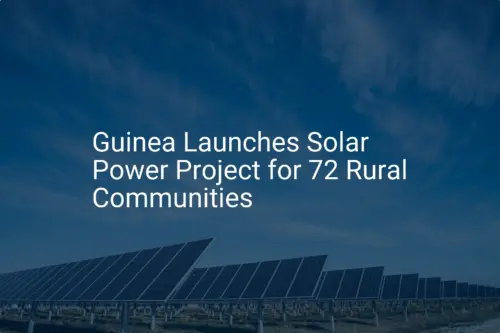An investor considering Equatorial Guinea for a new solar module factory sees clear opportunities in its high solar irradiation and the government’s push for economic diversification.
Yet, a common question arises: “Where will we find the skilled technicians to run a modern production line?” It’s a valid concern, but one that often stems from a misconception. The challenge isn’t a lack of capable people, but a lack of specialized training—a gap that can be readily bridged.
Building a solar module factory is not just about procuring machinery; it’s about cultivating a team capable of operating it to international standards. This article outlines a practical approach to recruiting, training, and retaining a local workforce in Equatorial Guinea, transforming a perceived labor challenge into a strategic asset.
Understanding the Labor Landscape in Equatorial Guinea
A successful human resources strategy begins with a clear understanding of the local context. For investors, Equatorial Guinea has a unique profile with distinct advantages and considerations.
Insights from J.v.G. turnkey projects in emerging markets highlight several factors key to planning.
Key Demographic and Economic Indicators:
-
High Literacy Rate: With a literacy rate of 95.3%, the population has a strong foundation for technical training. This means complex concepts, process documents, and quality control manuals are easier to grasp, significantly shortening the learning curve for new employees.
-
Youthful Population & Labor Pool: The national labor force is estimated at around 420,000 people. A significant portion of the population is young, and youth unemployment has been a persistent challenge. This creates a large pool of motivated candidates eager for stable, long-term employment in a forward-looking industry.
-
Industrial Familiarity: The economy’s historical reliance on the oil and gas sector means a segment of the workforce is already familiar with industrial environments, safety protocols, and shift work. However, the precision and delicate handling required in the solar panel manufacturing process explained will demand a new level of meticulousness and quality discipline.
-
Government Focus on Diversification: The national development plan, “Horizonte 2035,” emphasizes economic diversification away from hydrocarbons. A solar manufacturing project aligns perfectly with this goal, suggesting strong potential for government support and a favorable operating environment.
In short, the workforce is not unskilled, but rather unspecialized in photovoltaics. The task, then, is to build specific competencies on this solid educational foundation.
Ready to make big Profits?
The solar Industry is Booming
WE HELP NEWCOMERS to the solar industry start their own solar module production line. Customers can make BIG PROFITS by selling modules and finding investors, without wasting money and time on things they don't need!

A Practical Framework for Building Your Technical Team
Creating a high-performing team from the ground up requires a structured, multi-stage approach. The goal is to efficiently guide new hires from raw potential to proficient execution.
Step 1: Strategic Recruitment and Selection
The most successful operators are not always those with prior factory experience. The focus, instead, should be on inherent traits and aptitude.
-
Profile for Success: Seek candidates who demonstrate high levels of concentration, manual dexterity, and a methodical approach to tasks. These qualities are more critical than a technical diploma. During interviews, practical tests—such as assembling a small, complex object—can be more revealing than a traditional conversation.
-
Local Partnerships: Engage with local community leaders and vocational institutions. These partnerships can build trust and provide access to a vetted pool of motivated individuals.
-
Clear Expectations: Job advertisements and interviews should clearly communicate that the role involves a comprehensive training period. This positions the job as a career opportunity, attracting candidates interested in skill development and long-term growth.
Step 2: Structured Foundational and On-the-Job Training
A dual approach, combining theoretical knowledge with extensive hands-on practice, is highly effective. The typical training program for a new team lasts between four and six weeks.
Classroom Learning (The “Why”): The initial phase covers the fundamentals in a classroom setting. Topics include:
- Basics of photovoltaic technology
- The function of each machine in the production line
- Material handling and quality standards for cells, glass, and encapsulants
- Workplace safety and cleanroom protocols
Given the official languages, all training materials and instruction should be provided in Spanish and/or French to ensure full comprehension.
Practical Machine Training (The “How”): Here, theory becomes practice. Under the guidance of experienced trainers, new employees learn to operate the equipment they will be responsible for. This is a core part of setting up a what is a turnkey solar module production line, where machine commissioning and team training happen in parallel.
For example, trainees assigned to the stringer machine will practice handling delicate solar cells, loading ribbons, and monitoring the soldering process until their actions are precise and consistent. Each station—from cell stringing and bussing to lamination and final testing—has its own dedicated training module.

Step 3: Cultivating a Culture of Quality and Retention
Once the line is operational, the focus shifts to continuous improvement and staff retention.
-
Standard Operating Procedures (SOPs): Every task must be documented with clear, visual SOPs placed at each workstation. This ensures consistency and becomes the foundation for quality control.
-
Career Progression: Establish a clear path for advancement. A proficient machine operator can be trained to become a team leader, quality inspector, or maintenance assistant. This structure provides long-term motivation and reduces employee turnover.
-
Empowerment and Recognition: A common concern for investors, much like Mr. Etim from Nigeria initially expressed, is whether a local team can achieve international quality standards. The answer lies in empowerment. When employees are trained to identify and flag potential quality issues, they take ownership of the final product. Recognizing and rewarding this diligence reinforces a culture of excellence.

The Business Case: Investment in Training vs. Importing Labor
Some investors might consider hiring experienced expatriate staff to run operations. While one or two expert supervisors may be necessary initially, relying on a fully expatriate team is rarely a viable long-term strategy.
Instead, the initial investment required for solar panel manufacturing plant should include a budget for a comprehensive training program. This upfront cost is consistently offset by long-term benefits:
- Lower Operating Costs: Local salaries are more sustainable than expatriate packages.
- Higher Retention Rates: Employees with strong community ties are less likely to leave.
- Operational Resilience: A fully localized team ensures operations are not dependent on a few key foreign individuals.
- Enhanced Reputation: Investing in the local community builds significant goodwill with government bodies and the public.
Frequently Asked Questions (FAQ)
-
How long does it take to train a new production operator?
For a motivated individual with good manual dexterity, intensive training for a specific role like a stringer or layup operator takes approximately four to six weeks. This is followed by a period of supervised work on the production line to build speed and consistency. -
What are the most critical skills for solar module assembly workers?
Attention to detail is paramount. Other crucial skills include process discipline (the ability to follow instructions precisely every time), good hand-eye coordination, and a proactive attitude toward quality control. -
Do we need to hire foreign experts?
It is standard practice to have one or two experienced engineers from the equipment supplier (such as J.v.G. Technology GmbH) on-site for the first 6-12 months. Their role is to oversee the final stages of training, optimize production processes, and mentor the local team leaders who will eventually assume full responsibility. -
How can we ensure consistent quality with a newly trained team?
Quality is embedded in the system, not just the individual. This is ensured through rigorous, multi-stage quality checks, clear visual work instructions at every station, regular performance audits, and a culture where every team member is responsible for the quality of their work.
Conclusion: From Potential to Production
The challenge of establishing a solar module factory in Equatorial Guinea is not in finding a workforce, but in building one. The country’s high literacy rate and motivated youth provide fertile ground for developing a world-class technical team.
By implementing a systematic approach to recruitment, training, and retention, an investor can transform the local labor pool into a highly skilled and dedicated asset. This strategy not only ensures operational success and consistent product quality but also creates a sustainable business that contributes meaningfully to the local economy and its industrial diversification goals. With the right process, a local team can confidently and competently drive the facility’s success for years to come.






